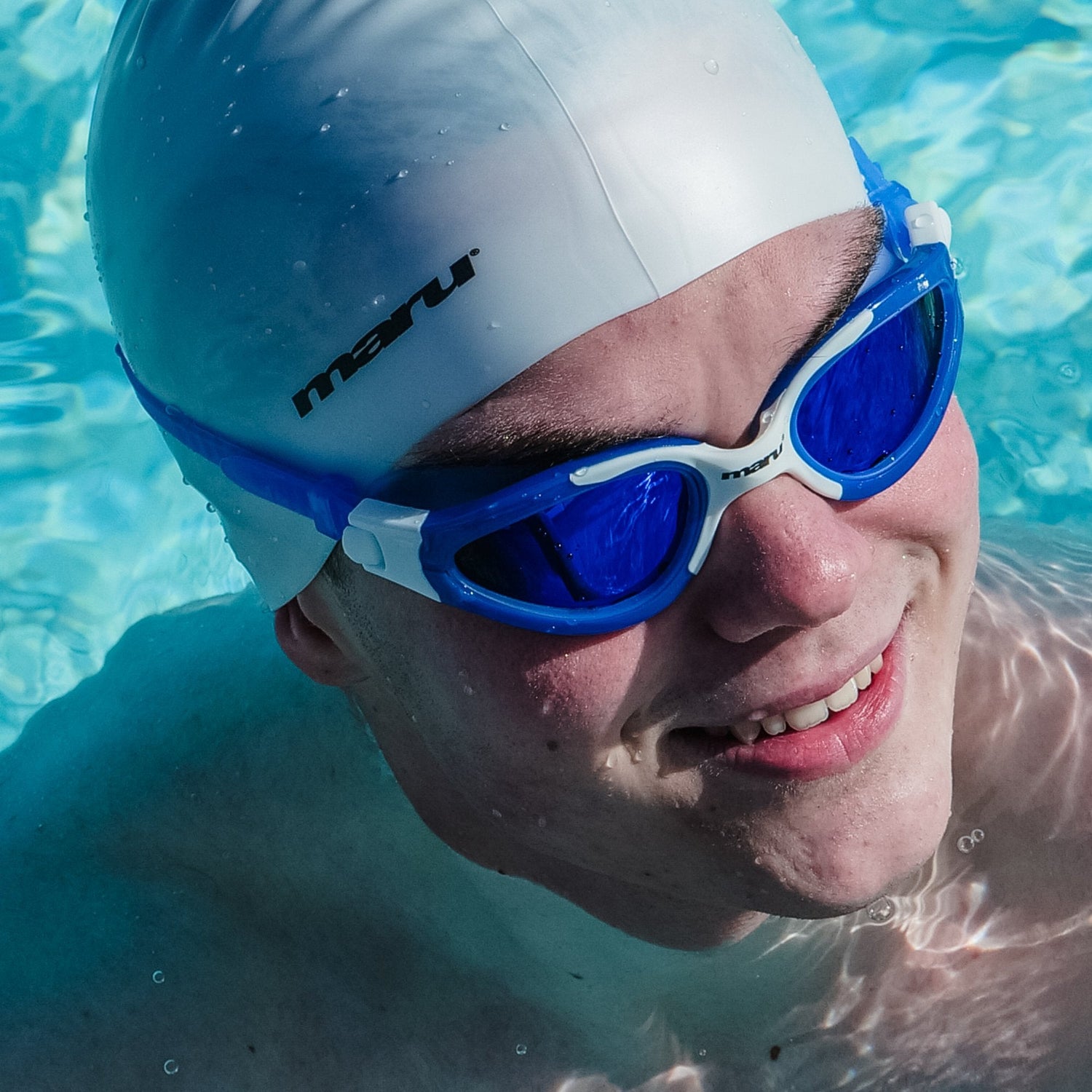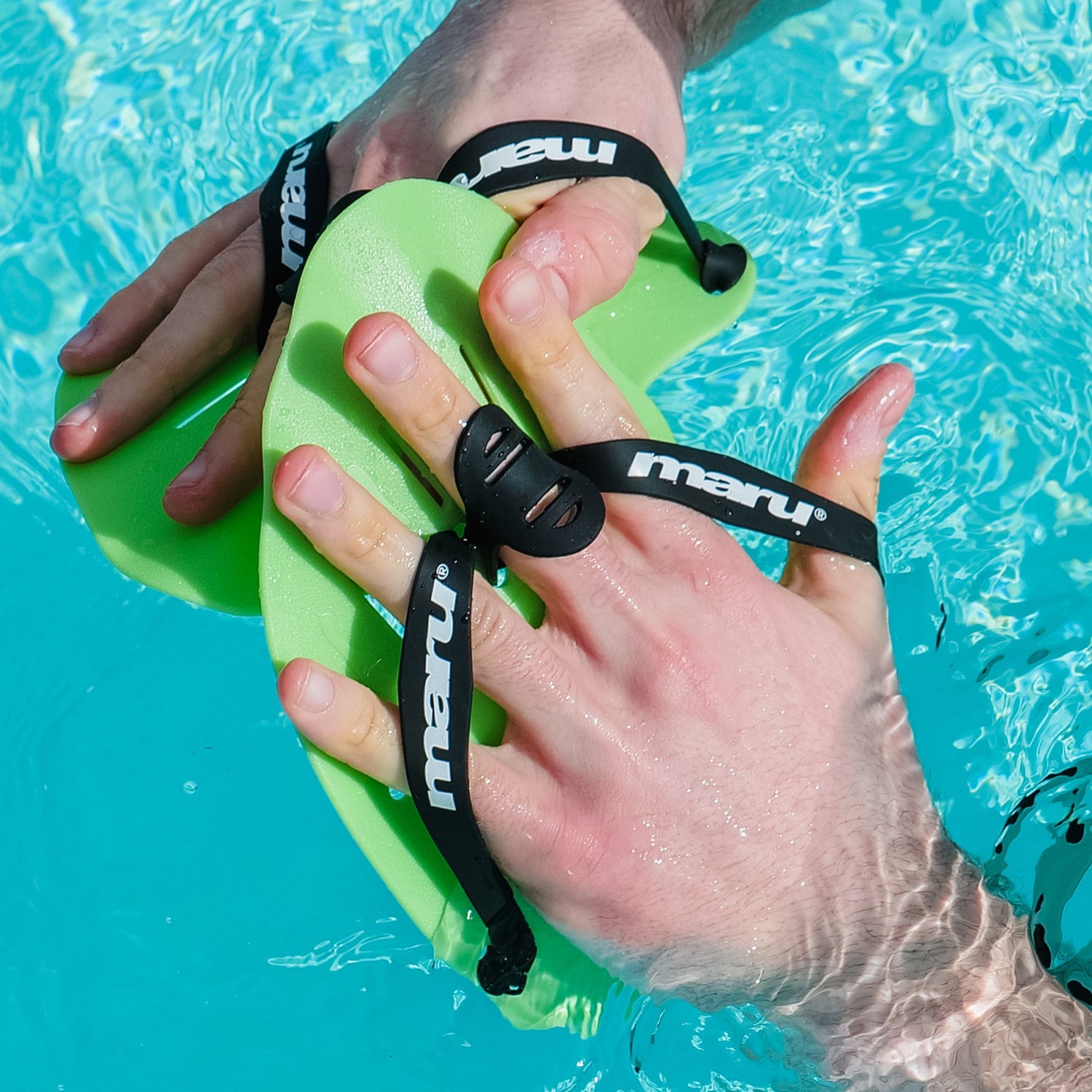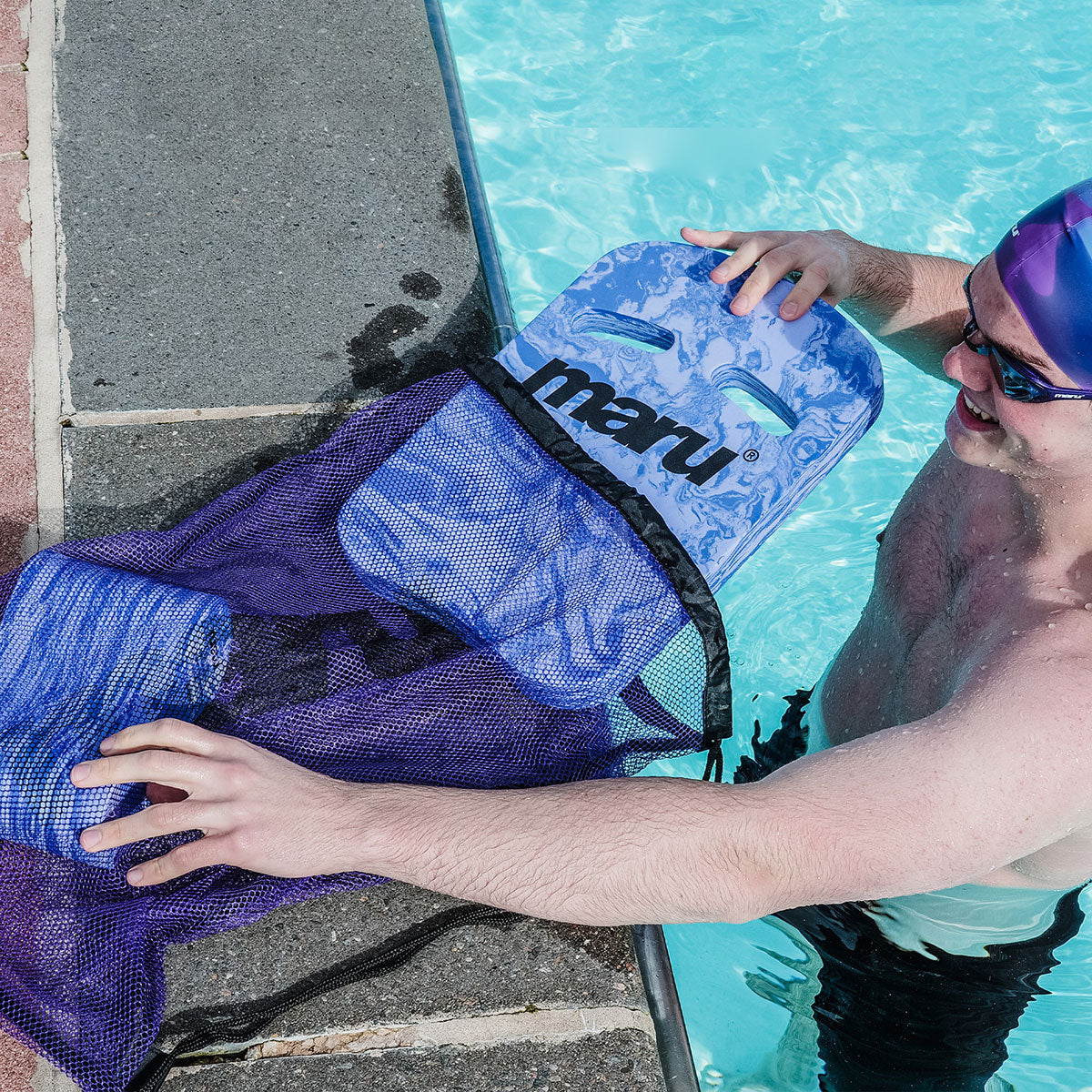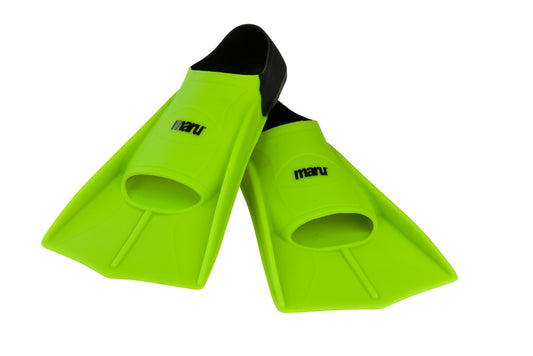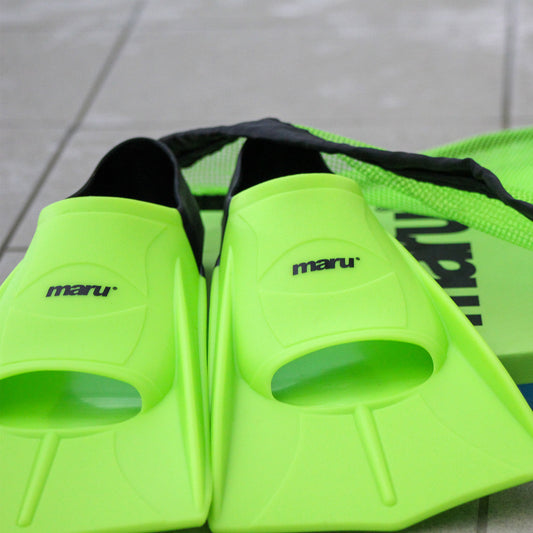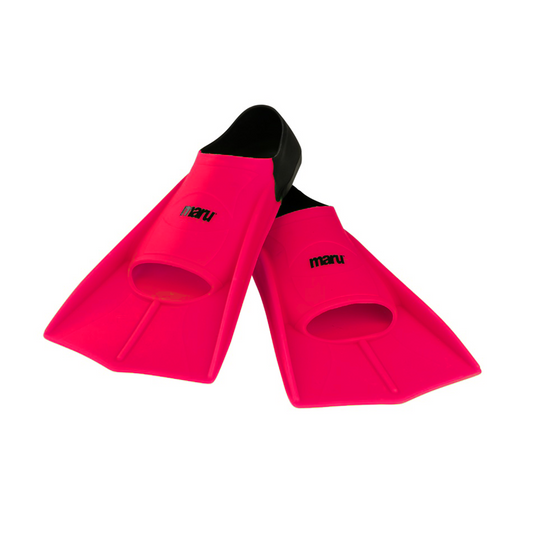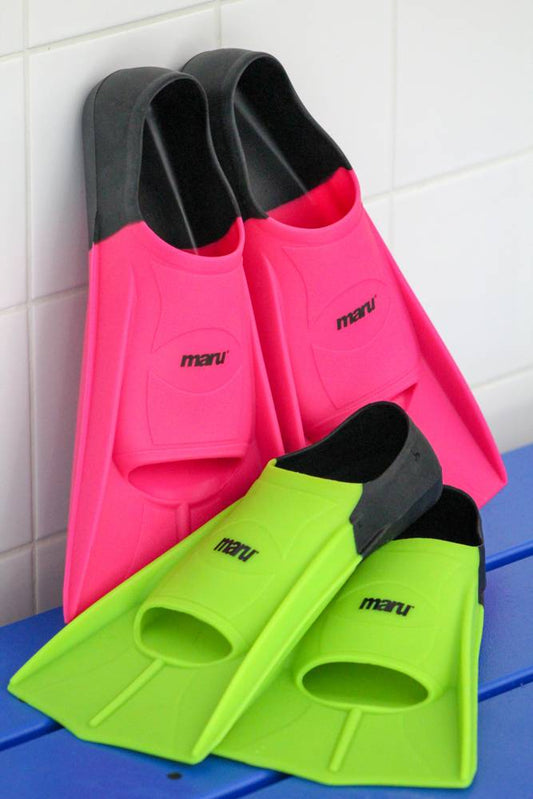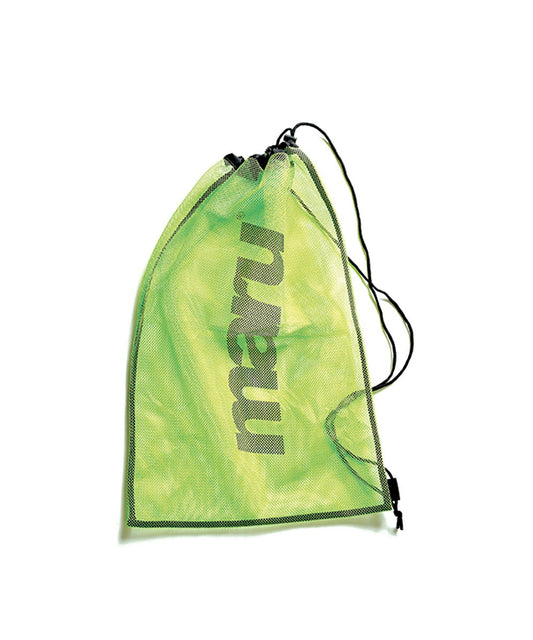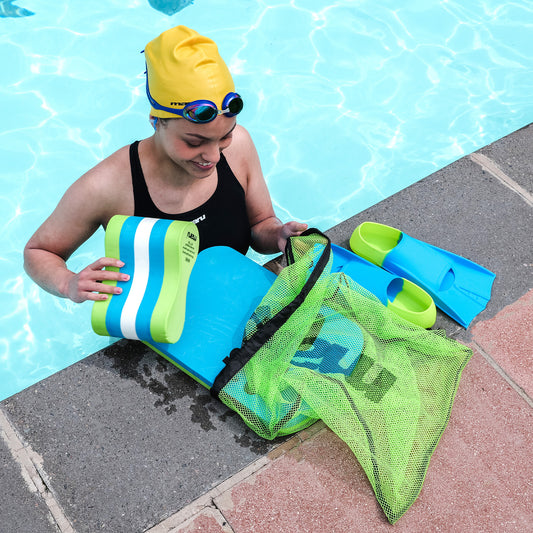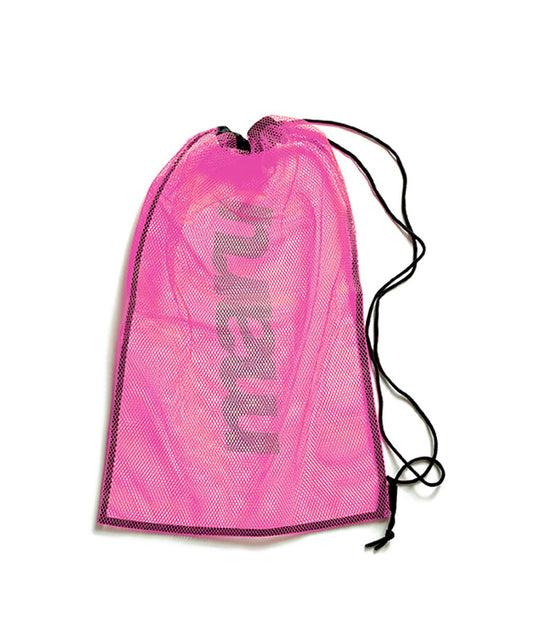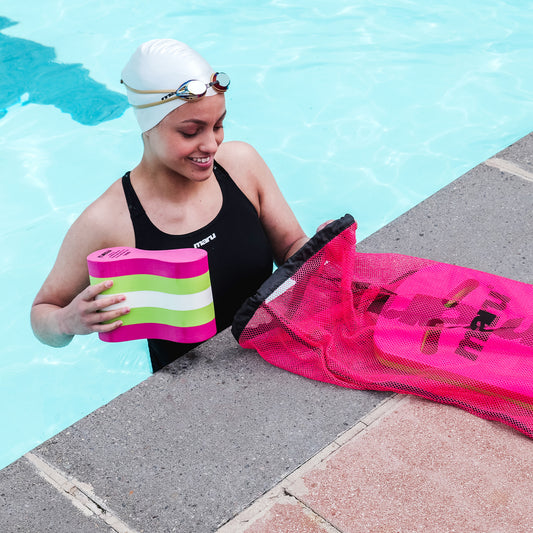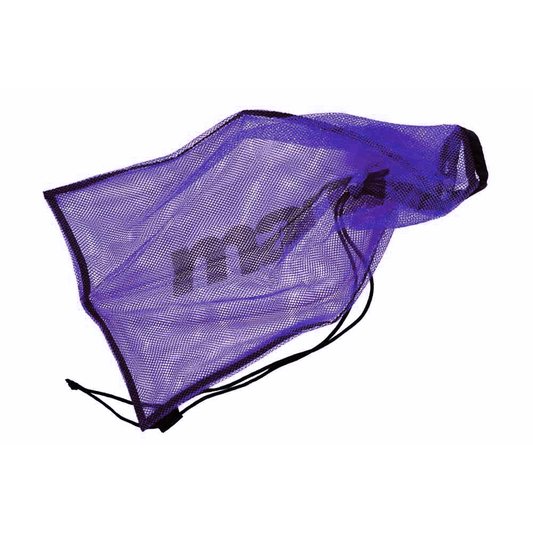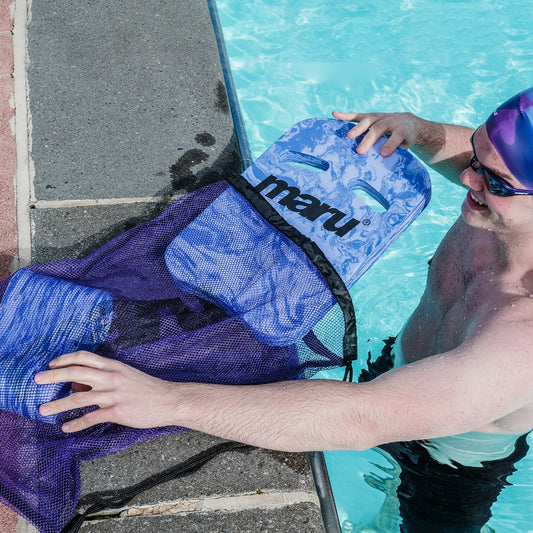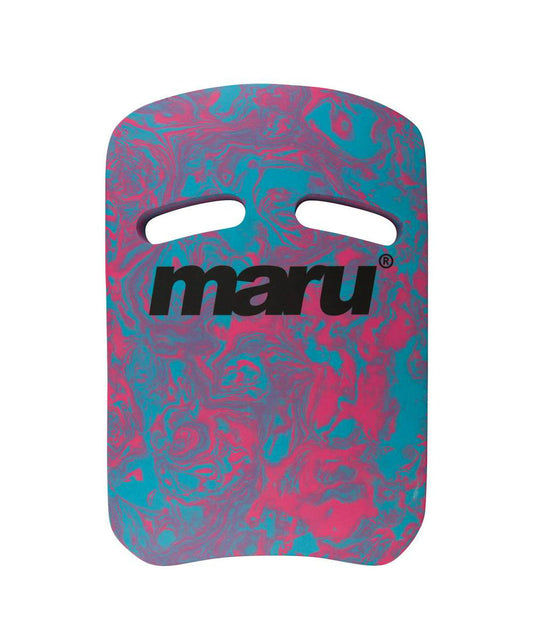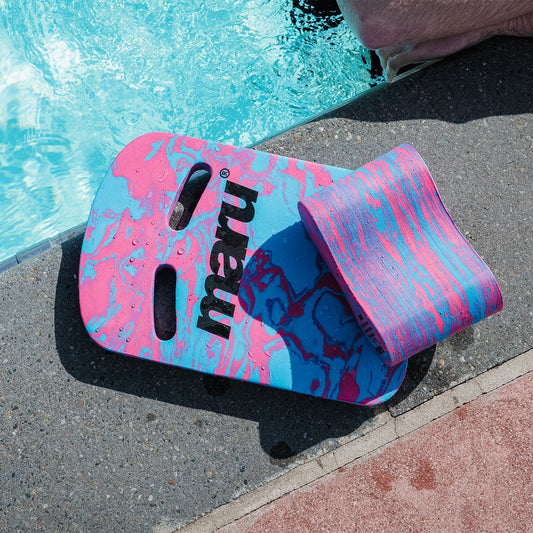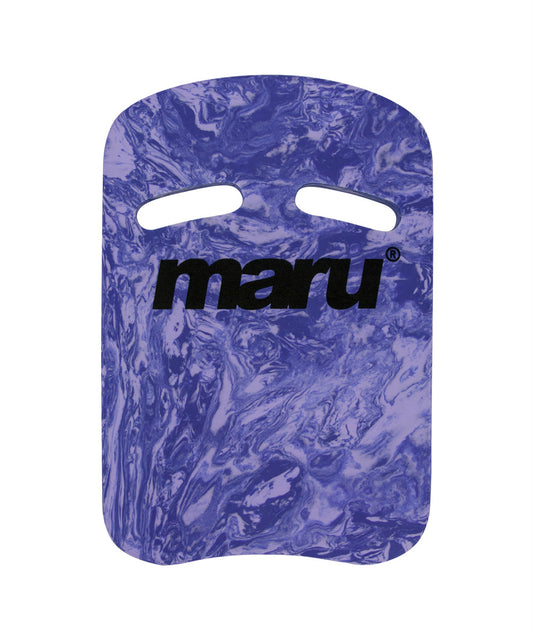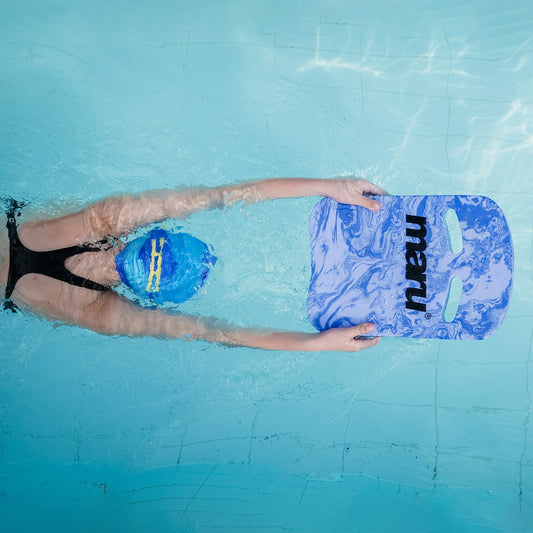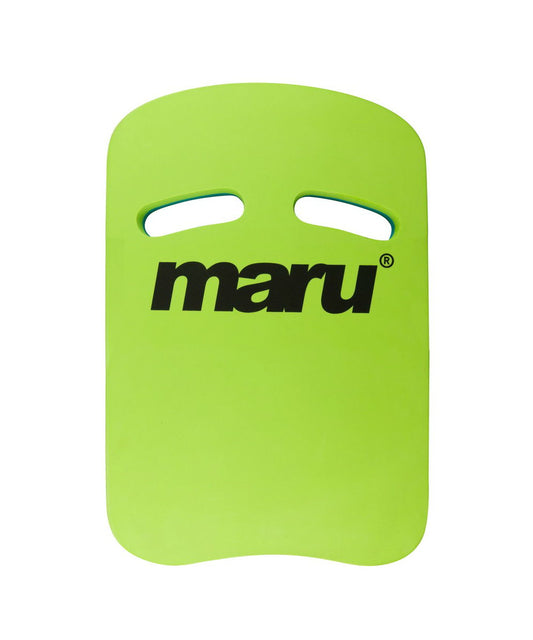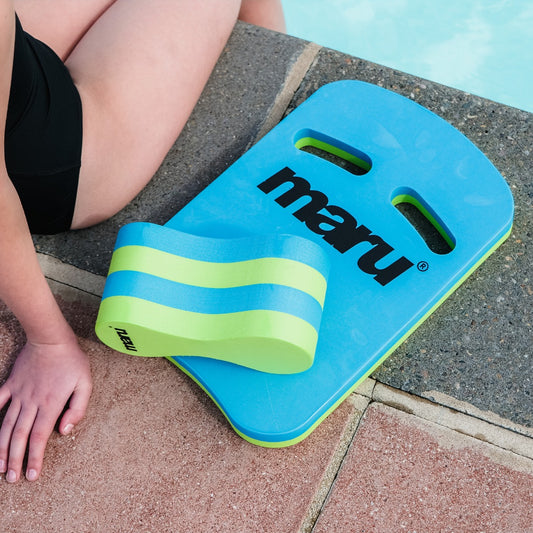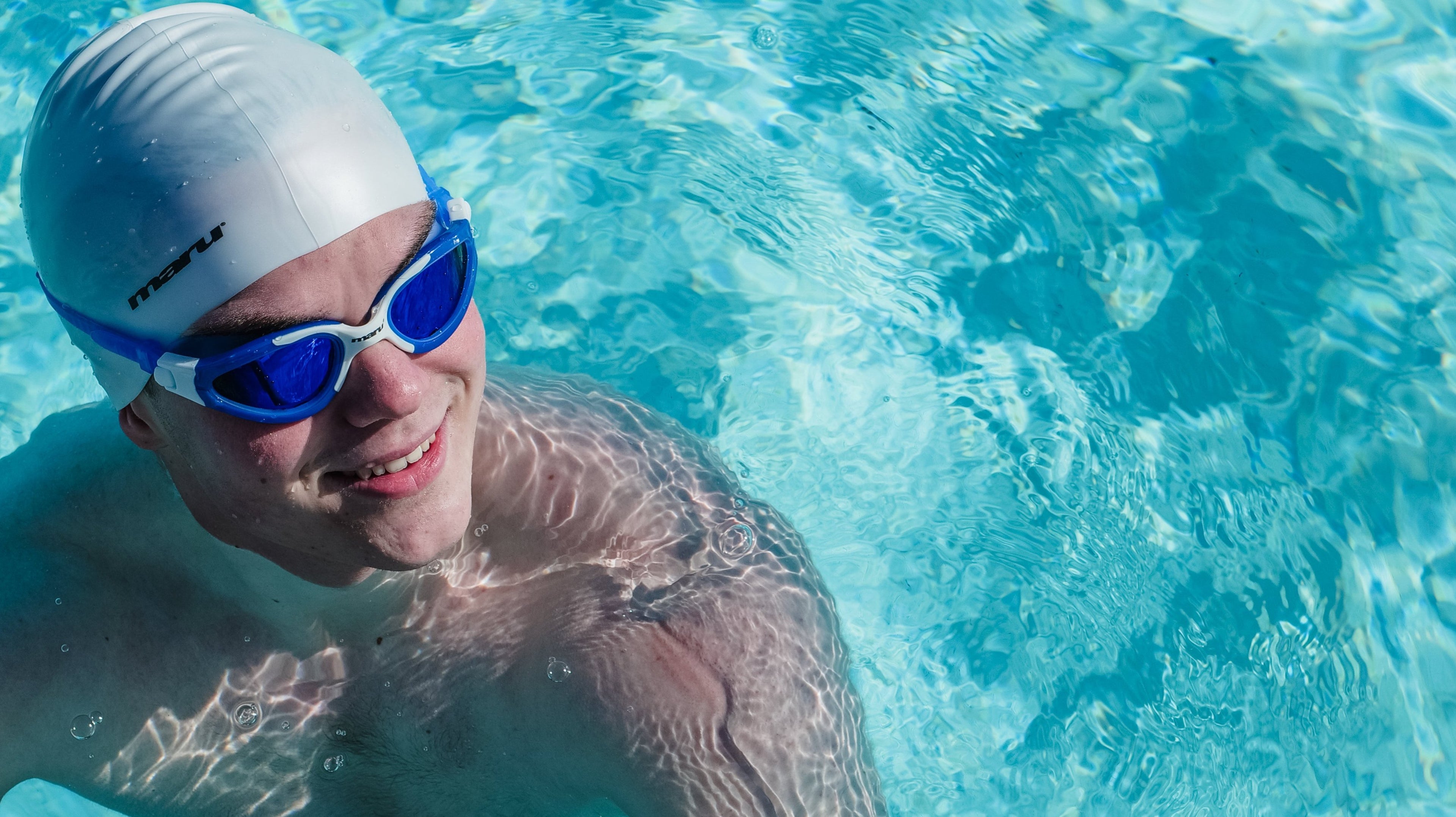
The Swim Training Equipment Recommended By Coaches
For beginners to competing swimmers, we provide the Swim Training Equipment you need to improve your lap times, body strength and confidence in the pool
Shop Swim Training Accessories
-
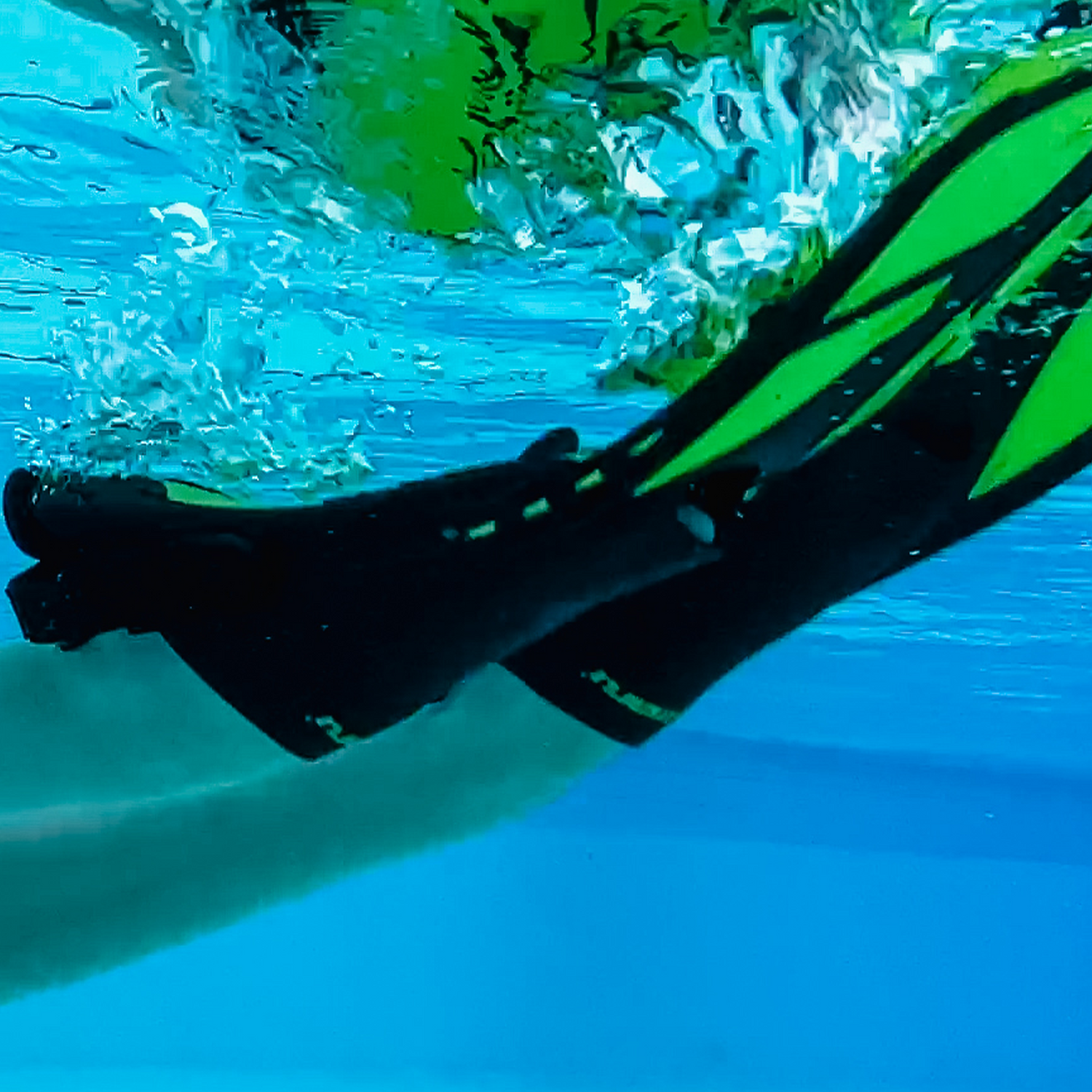
Swim Training Fins & Flippers
Welcome to Maru, your first choice for high-performance swimming, diving, and training...
-
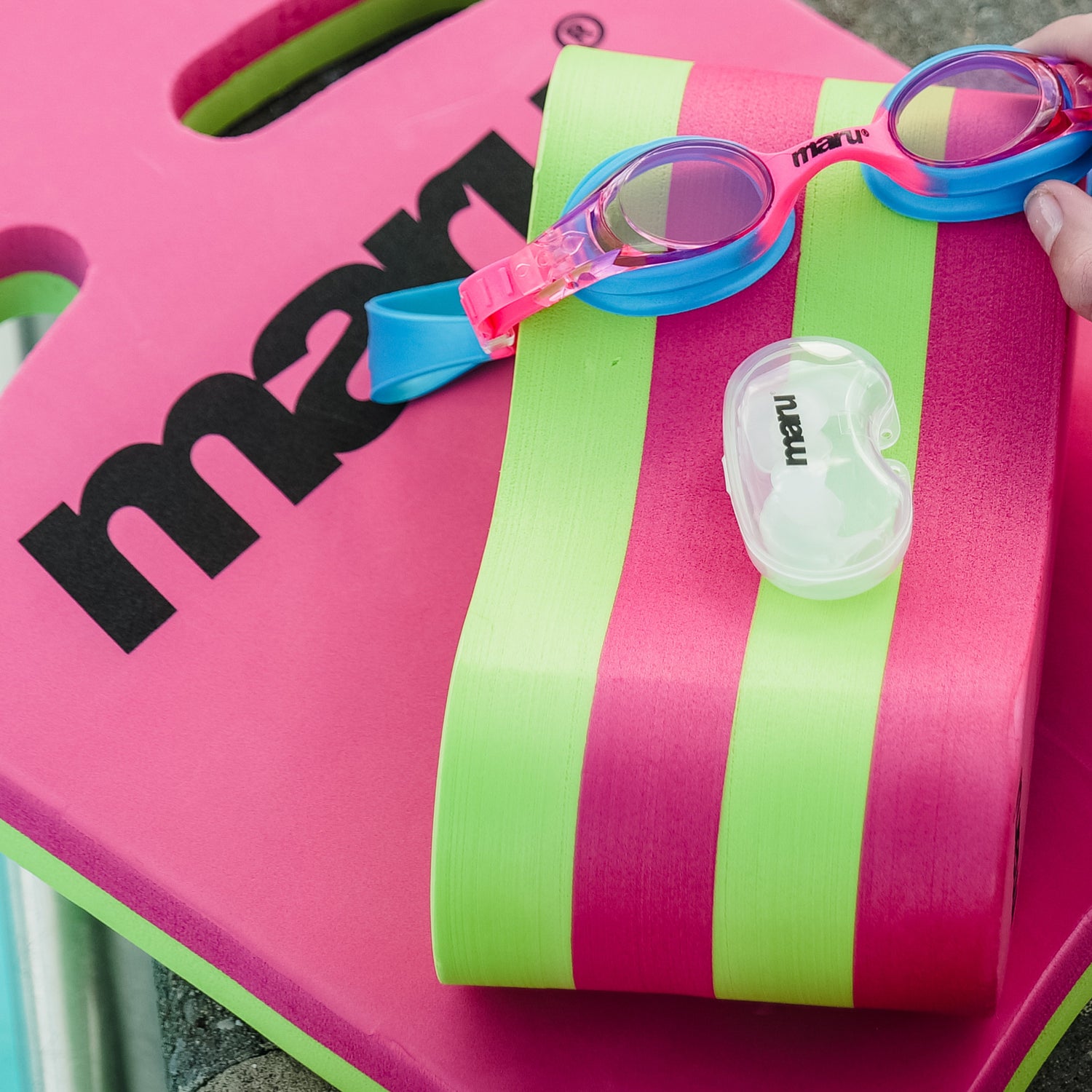
Swim Pull Buoys
Our pull buoys are designed to help swimmers of all levels refine...
-
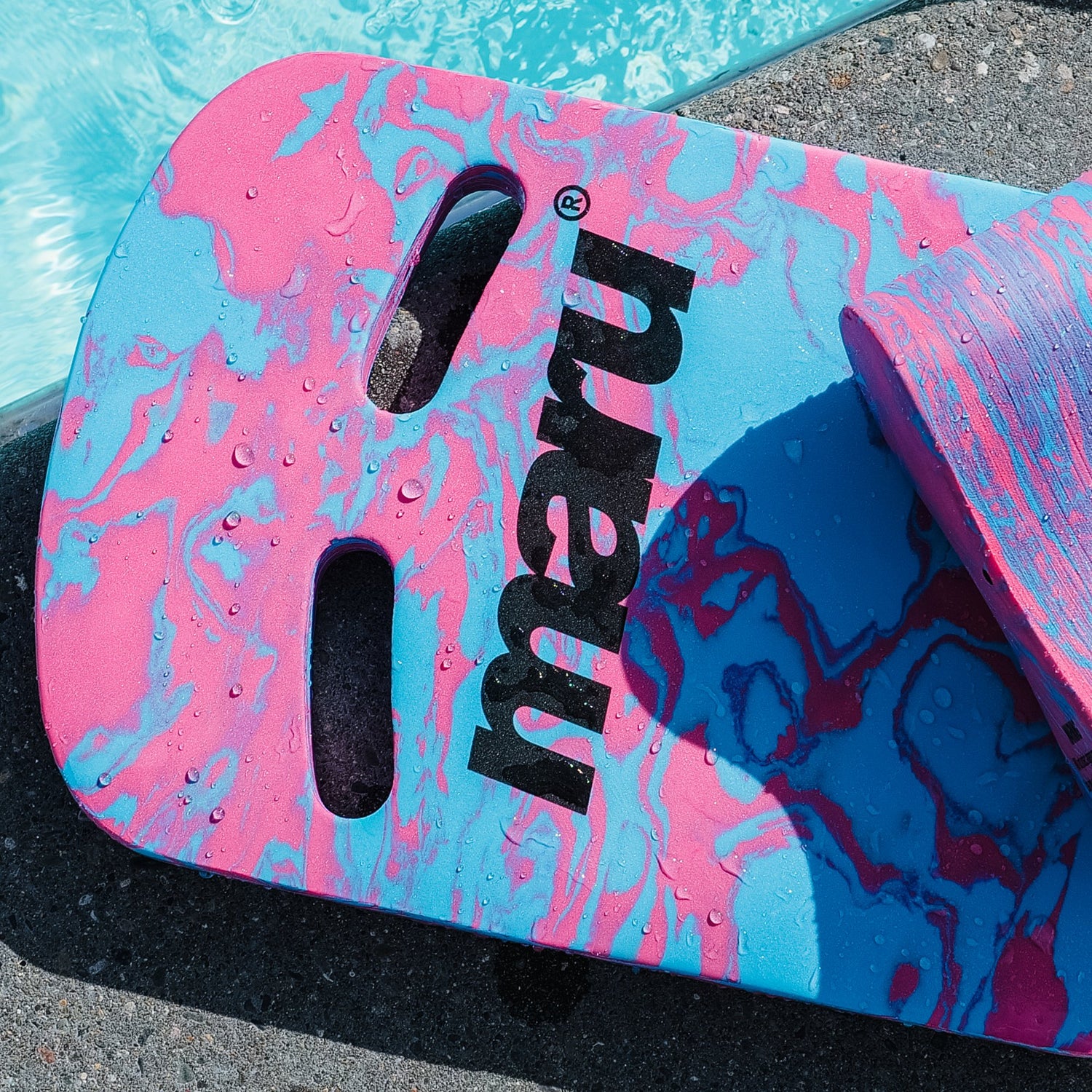
Swimming Kickboards
Welcome to Maru, your go-to destination for high-quality swimming kickboards designed to...
-
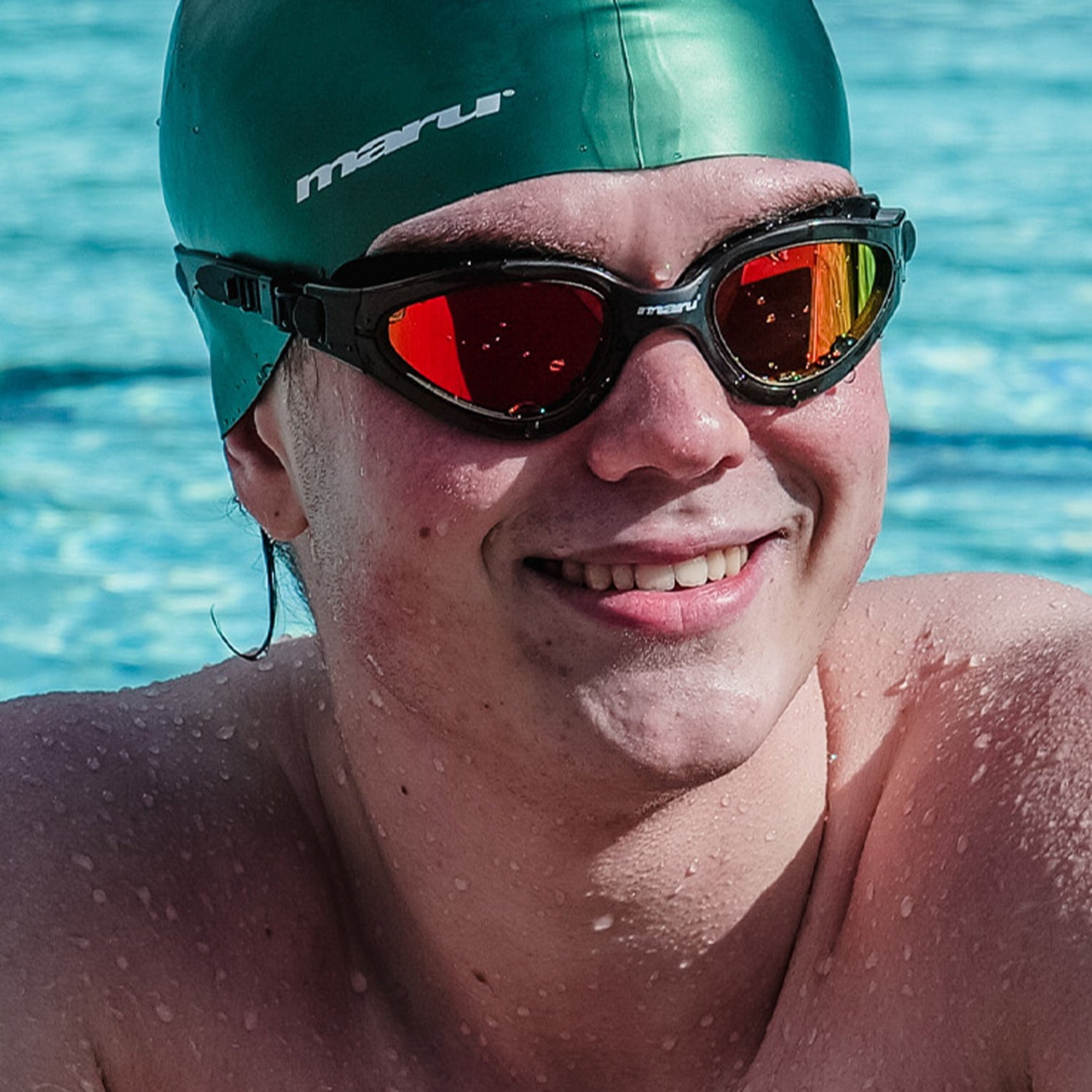
Swim Goggles
Welcome to Maru, your ultimate source for high-quality swimming goggles designed for...
-
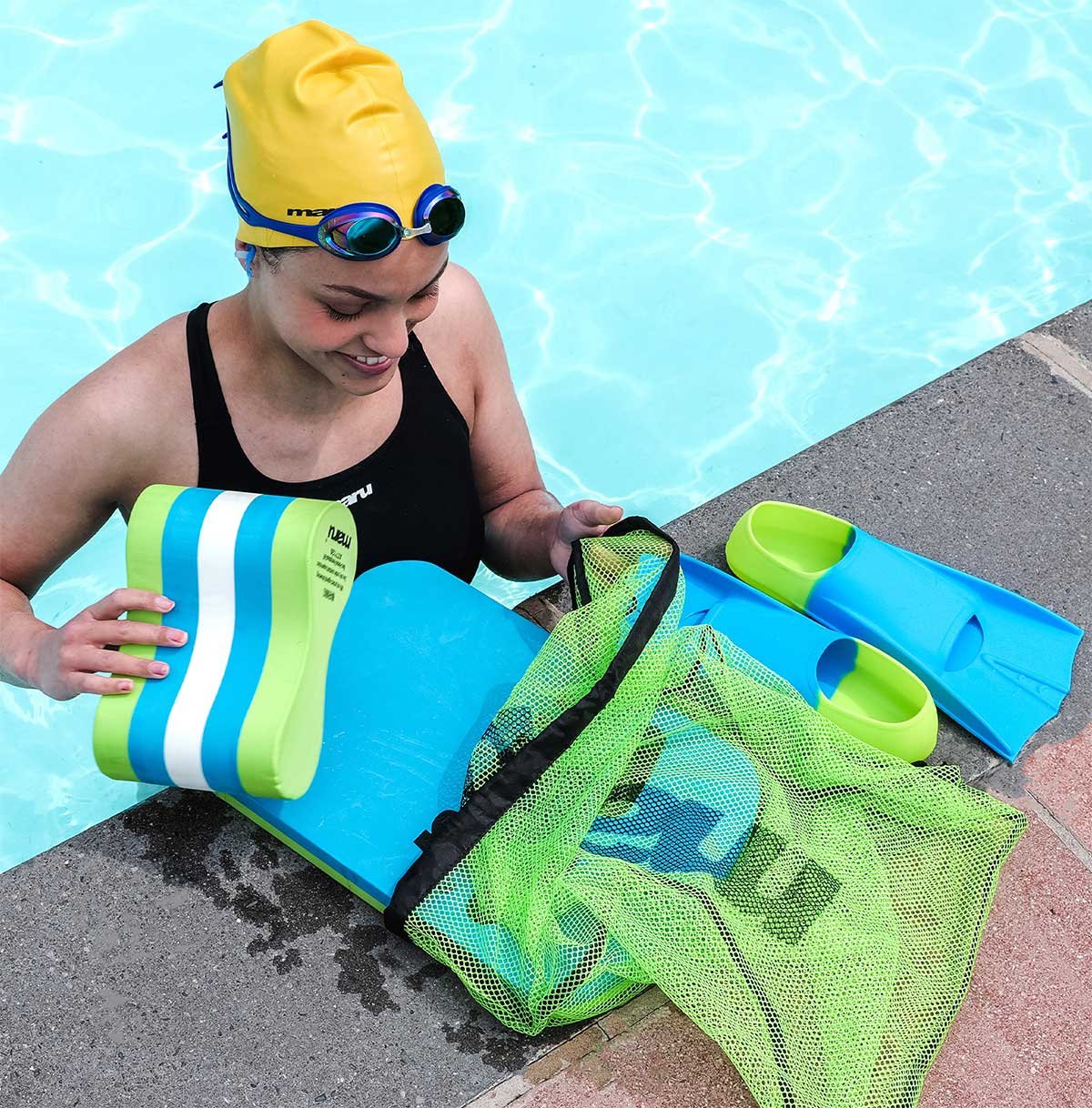
Swim Training Bundles
For a limited time only, shop from our range of swim training...
Swimmers shop for...
-
Maru Swim Training Fins - Neon Lime/Black
Regular price £25.99Regular priceUnit price / per -
Maru Swim Training Fins - Pink/Black
Regular price £25.99Regular priceUnit price / per -
Mesh Bag For Swim Equipment - Lime
Regular price £9.49Regular priceUnit price / per -
Mesh Bag For Swim Equipment - Pink
Regular price £9.49Regular priceUnit price / per -
Mesh Bag For Swim Equipment - Purple
Regular price £9.49Regular priceUnit price / per -
Maru Swim Kickboard - Blue and Pink Swirl
Regular price £15.99Regular priceUnit price / per -
Maru Swim Kickboard - Dark Purple and Purple Swirl
Regular price £15.99Regular priceUnit price / per -
Maru Swim Kickboard - Blue and Lime
Regular price £15.49Regular priceUnit price / per
Swimming Tips & Advice
View all-
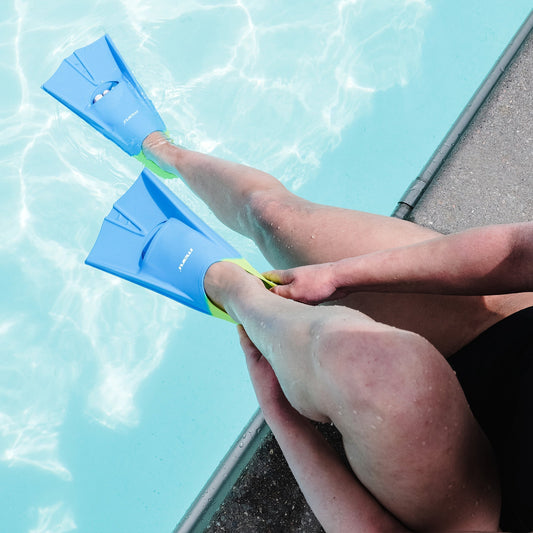
Swim Fins, Hand Paddles, and Pull Buoys - What'...
Every swimmer reaches that point where they want to swim further, faster, or just feel smoother in the water. Training aids like fins, paddles, and pull buoys help you get there each one improving a specific part of your stroke. Coach Sam explains what each tool does, how to use them properly, and which one might be right for your swim goals.
Swim Fins, Hand Paddles, and Pull Buoys - What's the Difference?
Every swimmer reaches that point where they want to swim further, faster, or just feel smoother in the water. Training aids like fins, paddles, and pull buoys help you get...
-
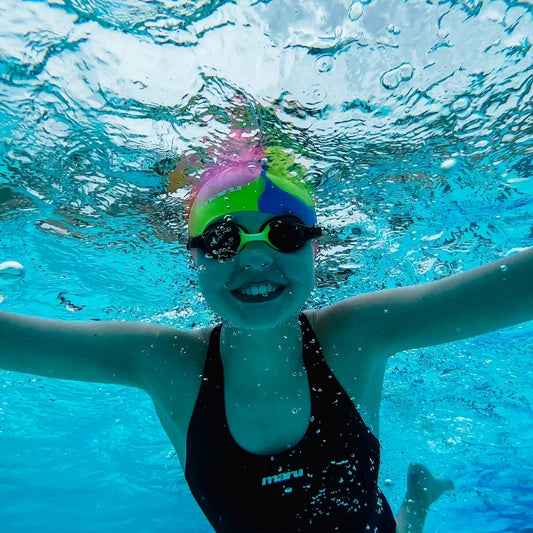
What Accessories Do You Need for Swimming?
Whether starting out or training for competition, the right swimming accessories make all the difference. This guide explores essential swim gear for all ages and abilities, from goggles and caps to training equipment that builds technique and confidence in the water.
What Accessories Do You Need for Swimming?
Whether starting out or training for competition, the right swimming accessories make all the difference. This guide explores essential swim gear for all ages and abilities, from goggles and caps...
-
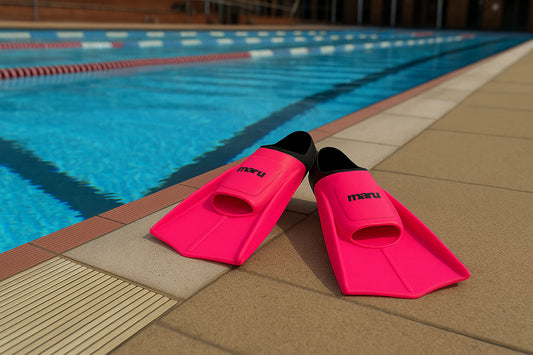
Training Fins: Your Swimming Coach's Guide to F...
Hello young swimmers (and parents sat in the viewing gallery!) Your swim coach here, and today we're going to talk about one of the most exciting pieces of swimming equipment you'll ever use....training fins! You might call them flippers, and that's perfectly fine too. These colourful foot extensions can transform your swimming experience, but like any powerful tool, they need to be used wisely. What Are Swim Training Fins and Why Do We Use Them? Training fins are rubber or silicone extensions that slip over your feet, making them longer and giving you more surface area to push against the water. Think of them like superpowers for your feet! They help you swim faster, kick stronger, and learn new skills more easily. But here's the important part: fins are training tools, not magic wands. They're designed to help you become a better swimmer, not to replace good technique and hard work. The Amazing Benefits of Swim Training Fins You'll Feel Like a Dolphin! The first time you put on fins, you'll be amazed at how fast you can swim! This speed boost isn't just fun (though it definitely is) it helps you understand what efficient swimming feels like. When you're moving quickly through the water, you can focus on your stroke technique without worrying about sinking or moving slowly. Building Stronger Legs Fins make your legs work harder because they create more resistance in the water. It's like doing strength training for your kick! Over time, this will make your natural kick much more powerful. When you take the fins off, you'll be surprised at how much stronger your legs have become. Perfect Your Body Position One of the biggest challenges for young swimmers is maintaining good body position in the water. Fins help lift your legs and hips, showing you exactly what proper body position should feel like. This is especially helpful when learning new strokes or improving your technique. Learn New Skills Safely Fins give you extra speed and stability, making it easier to learn challenging skills like flip turns, starts, and even butterfly stroke. The added propulsion helps you maintain momentum while you're still figuring out the timing and coordination. Build Confidence There's something magical about swimming fast! Fins can boost your confidence in the water and help you feel more comfortable with speed. This confidence often carries over to your regular swimming, making you a more relaxed and effective swimmer. The Important Things to Watch Out For Don't Become Fin-Dependent (see what I did there?) This is the biggest concern I have as your coach. Some swimmers love fins so much that they struggle to swim well without them. If you use fins for every practice, your natural kick might actually get weaker! It's like using a calculator for every math problem ... you might forget how to do the work yourself. Technique Can Get Sloppy Because fins make swimming easier, some swimmers get lazy with their technique. They might think, "I'm going fast, so I must be doing it right!" But speed with fins doesn't always mean good technique. You still need to focus on proper stroke mechanics. Your Kick Might Change Fins encourage a slightly different kicking style than swimming without them. The longer fin blade works best with a deeper, more powerful kick. If you use fins too much, you might develop a kick that's too big for efficient swimming without them. Potential for Injury If you're not careful, fins can cause problems. They can give you blisters if they don't fit properly, or cause cramps if you're not used to the extra resistance. Some swimmers also experience ankle or knee discomfort if they use fins that are too stiff or too large. False Sense of Progress Swimming fast with fins feels great, but it's important to remember that your real swimming speed is what matters. Some swimmers get discouraged when they take fins off because they feel slow again. Remember, the fins are just a training tool! How to Use Swim Fins Like a Champion Start Small and Build Up When you first start using fins, use them for short distances only. Maybe just a few lengths at a time. Your legs need time to adjust to the extra resistance, and your feet need time to get used to the feeling. Focus on Technique First Just because you're wearing fins doesn't mean you can forget about good technique! Use the speed and stability that fins provide to practice perfect stroke mechanics. This is when fins are most valuable. Mix It Up The best swimmers alternate between swimming with fins and swimming without them. This helps you understand the difference and ensures your natural swimming doesn't suffer. A good rule might be: for every length you swim with fins, swim one without them. Choose the Right Size Fins should fit snugly but not too tightly. They shouldn't fall off, but they also shouldn't pinch your feet. If they're too loose, they won't work properly. If they're too tight, they'll hurt and might cause blisters. Listen to Your Body If your feet, ankles, or legs start to hurt while using fins, take a break! Your body is telling you something important. It's normal to feel some muscle fatigue, but sharp pain means you should stop. When Swim Fins Are Most Helpful Learning Butterfly Stroke Butterfly is the most challenging stroke, and fins can make it much easier to learn. They help you maintain speed while you're figuring out the timing and coordination. Improving Your Kick Specific kicking exercises with fins can dramatically improve your leg strength and technique. But remember to practice kicking without fins too! Building Endurance Fins can help you swim longer distances while maintaining good technique. This is great for building your fitness and confidence. Working on Starts and Turns The extra speed from fins can help you practice the underwater portions of starts and turns more effectively. The Coach's Golden Rules for Swim Fins Never swim a whole practice with fins on – Your natural swimming is what really matters! If it hurts, stop – Fins should feel powerful but not painful. Focus on technique, not just speed – Fast swimming with bad technique doesn't help you improve. Gradually increase your fin use – Don't jump straight into long, hard sets with fins. Choose quality over flashy colours – Well-made fins that fit properly are much better than cheap ones that look cool. Remember Young Swimmers: You Are the Engine! Here's the most important thing to remember: fins are just tools to help you become a better swimmer. They're not magic, and they can't replace hard work, good technique, and consistent practice. The real power comes from you – your determination, your focus, and your willingness to learn and improve. Think of fins like training wheels on a bicycle. They help you learn and build confidence, but the goal is always to become so good that you don't need them anymore. The best swimmers can swim beautifully both with and without fins. So enjoy your fins, use them wisely, and remember that every champion swimmer started exactly where you are now – learning, practicing, and having fun in the water. Keep working hard, stay focused on good technique, and those fins will help you become the swimmer you dream of being! Now, let's get in the pool and see what those fins can help you accomplish today!
Training Fins: Your Swimming Coach's Guide to Flipper Power!
Hello young swimmers (and parents sat in the viewing gallery!) Your swim coach here, and today we're going to talk about one of the most exciting pieces of swimming equipment...
-
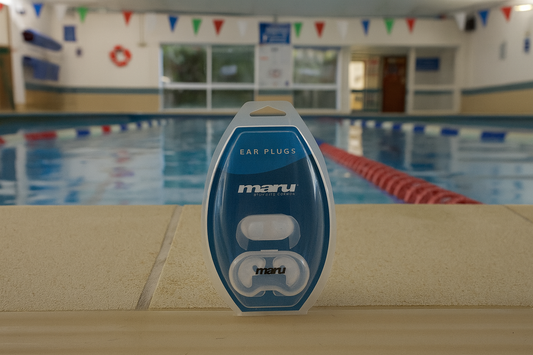
Swimming Ear Plugs: A UK Swim Coach's Guide to ...
After two decades of coaching swimmers across the UK, I've witnessed firsthand how ear-related issues can sideline promising young athletes and dampen their enthusiasm for the sport. From the chlorinated pools of local leisure centres to the competitive environment of national championships, protecting swimmers' ears has become an increasingly important aspect of my coaching philosophy. The Reality of Pool Water and Ear Health British swimming pools, whilst maintaining excellent safety standards, present unique challenges for young swimmers' ear health. The combination of chlorinated water, varying pH levels, and the damp environment of indoor pools creates conditions that can lead to swimmer's ear, infections, and long-term hearing issues. Swimmer's ear, medically known as otitis externa, is remarkably common among regular swimmers. The condition occurs when water remains trapped in the ear canal, creating an ideal breeding ground for bacteria and fungi. Young swimmers, with their developing ear canals and often less-than-perfect post-swim hygiene routines, are particularly susceptible. Understanding the Risks The most immediate concern for young swimmers is acute swimmer's ear, which can cause significant pain, itching, and temporary hearing loss. I've seen promising swimmers miss weeks of training due to ear infections that could have been prevented with proper ear protection. More concerning are the long-term implications. Repeated exposure to chlorinated water can lead to chronic inflammation of the ear canal, potentially resulting in permanent hearing damage. The constant wet environment can also break down the ear's natural protective barriers, making swimmers more susceptible to future infections. For competitive swimmers who train multiple times per week, the risk compounds significantly. The repetitive exposure to pool water, combined with the pressure changes experienced during diving and flip turns, creates an environment where ear problems can become chronic issues. The Benefits of Quality Ear Plugs Properly fitted ear plugs create a watertight seal that prevents pool water from entering the ear canal. This simple barrier dramatically reduces the risk of swimmer's ear and other water-related ear conditions. For young swimmers, this protection can mean the difference between consistent training and frustrating interruptions due to ear problems. Beyond infection prevention, ear plugs can improve comfort during training. Many swimmers report that they can focus better on technique when they're not constantly worried about water entering their ears. This is particularly beneficial for nervous swimmers or those learning new skills like flip turns or starts. Ear plugs also help maintain body temperature during longer training sessions. The ears are a significant source of heat loss, and keeping them dry can help swimmers stay warmer in cooler pool environments – a common concern in many UK facilities. Choosing the Right Ear Plugs Not all ear plugs are created equal, and selecting the right type is crucial for both protection and comfort. Silicone ear plugs, like those offered by quality swimming equipment suppliers, provide excellent waterproofing whilst remaining comfortable for extended wear. The key characteristics to look for include a secure but comfortable fit, complete water resistance, and materials that won't irritate sensitive skin. Quality ear plugs should stay in place during vigorous swimming activities, including starts, turns, and sprint training. For young swimmers, comfort is paramount. Ear plugs that cause discomfort or pressure will likely be removed during training, defeating their protective purpose. Look for plugs that can be moulded to fit individual ear shapes, ensuring both comfort and effectiveness. Proper Fitting and Usage Achieving the correct fit is essential for ear plug effectiveness. The plugs should create a complete seal without causing discomfort or pressure. For young swimmers, parents and coaches should initially supervise the fitting process to ensure proper technique. The ear plugs should be inserted gently, allowing the material to conform to the ear canal's shape. They should feel secure but not painful, and swimmers should be able to hear muffled sounds, indicating that the seal is working without being excessive. Regular inspection of ear plugs is important, as damaged or worn plugs may not provide adequate protection. Quality ear plugs should maintain their shape and effectiveness over multiple uses, making them a cost-effective investment in swimmer health. Training Considerations From a coaching perspective, ear plugs can initially affect a swimmer's spatial awareness and ability to hear instructions. Young swimmers may need time to adjust to the sensation and slight hearing reduction. I recommend introducing ear plugs gradually, starting with shorter training sessions and building up to full workouts. Communication becomes particularly important when swimmers are using ear plugs. Visual cues and demonstrations may need to be more prominent, and coaches should ensure swimmers can still hear safety instructions clearly. Some swimmers worry that ear plugs will affect their performance, but in my experience, any initial adjustment period is quickly overcome. The benefits of consistent, infection-free training far outweigh any minor temporary inconvenience. Beyond Basic Protection Quality ear plugs offer benefits beyond simple water exclusion. They can help swimmers maintain focus during training by reducing distracting sounds from the pool environment. This can be particularly beneficial during technique work or when learning new skills. For swimmers who train in outdoor pools or open water, ear plugs provide additional protection against cold water and wind, helping maintain ear health in challenging conditions that are common in UK swimming environments. Building Healthy Habits Introducing ear plugs as part of a comprehensive ear care routine helps young swimmers develop good habits that will serve them throughout their swimming career. This includes proper insertion and removal techniques, regular cleaning of the ear plugs, and awareness of when to seek medical attention for ear problems. Teaching swimmers to recognise the early signs of ear issues, such as itching, pain, or unusual discharge, empowers them to take preventive action before problems become serious. Ear plugs are most effective when used consistently, not just when problems arise. The Investment in Long-Term Health Quality ear plugs represent a small investment compared to the potential costs of treating chronic ear problems or the impact of missed training due to infections. For families committed to their child's swimming development, ear plugs are essential protective equipment, not optional accessories. The peace of mind that comes from knowing your young swimmer is protected allows both parents and athletes to focus on skill development and enjoyment rather than worrying about potential health issues. Making the Right Choice When selecting ear plugs for young swimmers, prioritise quality, comfort, and proven effectiveness. Look for products specifically designed for swimming (like MARU's made from high-grade silicone), with materials that can withstand regular exposure to chlorinated water and provide reliable protection. Consider the specific needs of your swimmer, those training multiple times per week require more robust protection than occasional recreational swimmers. However, even occasional swimmers benefit from ear protection, particularly in busy public pools where water quality can vary. The Coach's Recommendation As a coach who has seen too many promising swimmers sidelined by preventable ear problems, I strongly recommend quality ear plugs as essential equipment for any young swimmer. The protection they provide, combined with the confidence and comfort they offer, makes them an invaluable investment in your child's swimming journey. Don't wait for problems to arise, prevention is always better than treatment. Equip your young swimmer with quality ear plugs and establish their use as a normal part of the swimming routine. Your swimmer's ears, and their long-term enjoyment of the sport, will thank you for this simple but crucial protection.
Swimming Ear Plugs: A UK Swim Coach's Guide to Protecting Young Swimmers
After two decades of coaching swimmers across the UK, I've witnessed firsthand how ear-related issues can sideline promising young athletes and dampen their enthusiasm for the sport. From the chlorinated...



